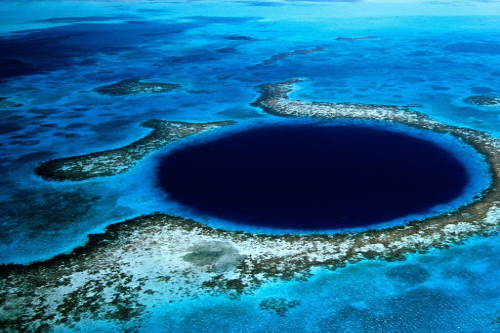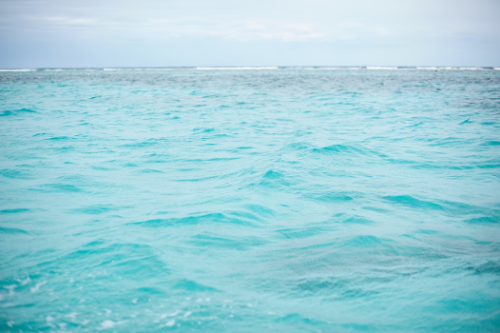The Great Blue Hole is a giant marine sinkhole off the coast of Belize. It lies near the center of Lighthouse Reef, a small atoll 70 km (43 mi) from the mainland and Belize City. The hole is circular in shape, 318 m (1,043 ft) across and 124 m (407 ft) deep.The Great Blue Hole is a part of the larger Belize Barrier Reef Reserve System. This is a World Heritage Site of the United Nations Educational, Scientific and Cultural Organization (UNESCO).
The Blue Hole is named after the rich blue colour of the water's surface. It is explained by the purity of the water and the considerable depth of such wells.
Today the Great Blue Hole is one of the most amazing dive sites found in the world. A giant well with a diameter of 400 m and a depth of 145 m is at the heart of the reef. A large number of fanciful limestone sculptures and stalactites adorn its walls and become more and more intricate as you dive deeper into the reef.
Big blue hole is Belize's business card
The circular shape of the reef provides an ideal environment for corals to live and grow. At low tide, corals sometimes break down, but very soon new colonies emerge in their place. The Blue Hole is connected to the sea by two narrow channels. Thus, it is an almost enclosed water space. The well is a large entrance to the system of passages and caves that permeate the entire seamount. The cave once had a large vault, but at the end of the last Ice Age it collapsed due to an earthquake. At the same time, rising sea levels caused the cave to be flooded.

At a depth of the first 30 m from the surface, the stalactites adhering to the walls of the well grow perpendicularly and resemble rods. They give the impression that the walls are covered with monstrous shining spikes. A few thousand years ago, these walls were the ceiling of a cave on land. The water in the well is almost immobile. The visibility area is approaching 60 metres.
In the depths of the well, there are entrances to the caves. Some of the underwater tunnels are connected to the mainland of Belize. On the mainland itself there is also a system of water-filled wells, which are connected to each other by tunnels and caves.
Sometimes shark species can be found deep in the well. Most of the time it is quite deserted - too little light penetrates here.
This place became world-famous after the release of a film by the famous French explorer Jacques Yves Cousteau. In which he named this pit among the best places for scuba diving. Not surprisingly, the Big Blue Hole has become a real Mecca for travelers and divers. Despite the fact that due to the lack of normal water circulation, there is virtually no life in it.
The best view of the sinkhole opens up from the air, where the picture takes on a special contrast. From here you can clearly see the dark spot of the abyss of the Great Blue Hole, surrounded by a coral reef.
